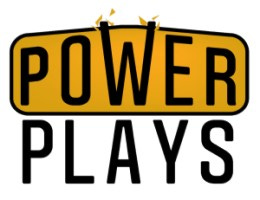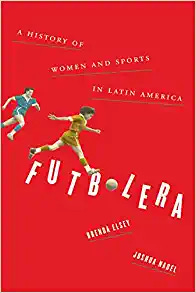The rise and fall of the AIAW, and what it meant to women's basketball
Plus: Important Power Plays Book Club announcements!!
Hello, friends. Welcome to Power Plays, your no-bullshit home for coverage of all things sexism in sports.
This is an issue just for paid subscribers. If you’ve been forwarded this email, you can subscribe using the Maya Moore discount with the button below.
Tomorrow, we will be having our first Power Plays Book Club discussion about “Sum It Up.” I AM SO EXCITED.
We will be doing this discussion via an open thread tomorrow (Friday, April 3) at 12:00 p.m. ET. It will be emailed to you. I’ve also hear that there is interest in organizing a zoom call as well, so stay tuned — even if it’s not specifically book club related, I think setting up a regular Power Plays Happy Hour via zoom or something during this time of self-isolation could be fun.
SCROLL TO THE BOTTOM OF THIS POST FOR SOME BOOK CLUB QUESTIONS TO PONDER.
Plus, an announcement: April’s Book Club selection is “Futbolera: A History of Woman and Sports in Latin America” by Brenda Elsey and Joshua Nadel.
Now, confession: Brenda is one of my co-hosts on Burn It All Down, so I am a bit biased about how great she is. But I promise that’s not the only reason I selected this book. I wanted to do something soccer-related, but I also really wanted to get out of the United States and focus on these fights for equity through a different cultural lens. The book is phenomenal, we’re all going to learn a lot.
Okay friends, let’s do this.
From the archives: The legacy of the AIAW
So, March was obviously a monster of a month, and I confess that I got a bit off schedule here at Power Plays. My plan with the book club is to do about two or three paid newsletters each month that will be supplemental reading to the month’s book selection. But it’s April, and I’m just now getting to that with “Sum it Up.”
Luckily, I have a feeling you all will allow me to still write newsletters about the history of women’s college basketball and Pat Summitt next week, and maybe even the week after, so stay tuned.
Today, I wanted to dive into a part of women’s basketball history that I knew far too little about — the decade-long reign of the Association of Intercollegiate Athletics for Women (AIAW).
The AIAW was around from 1971-1982, meaning they were governing women’s college athletics while Title IX was taking women’s sports to the next level.
Here’s what Summitt wrote about the AIAW in “Sum It Up.” The emphasis is mine:
Three events in 1972 changed everything for us. First, a group of dedicated women administrators formed the Association of Intercollegiate Athletics for Women, because the NCAA didn’t yet care enough about females to bother with us. The AIAW stepped in to govern women’s sports and established championships for us — including a sixteen-team basketball tournament that was eventually replaced by the women’s NCAA tournament.
Summitt played in the first ever AIAW women’s basketball tournament when she was in college at the University of Tennessee-Martin. They won their first game, 53-43 over Long Beach State, and then fell in the quarterfinals to the Mississippi State College for Women, 43-24. (Only 16 teams played in the tournament.)
(PHOTO: Pat Summitt when she played for UT-Martin in college, via Getty Images.)
In the book, here’s what she writes about that first tournament:
It was a 500-mile road trip, but somehow, (UT-Martin athletic director Bettye Giles) and (UT-Martin volunteer coach Nadine Gearin) begged and borrowed the money to send us. After we won the state tournament in Knoxville, Bettye went to a drugstore on the main drag and bought a large glass piggy bank and literally carried it around on the street, seeking donations. For a snapshot of the women’s game in 1972, imagine a full-grown woman walking around with a piggy bank, panhandling for change.
As a head coach at Tennessee, Summitt led the Lady Volunteers to a third-place finish in the 1977 and 1979 AIAW tournament, and a runner-up finish in 1980 and 1981. Here’s Summitt on the 1980 final:
We didn’t win a championship that year either, but the laughter lessened the pain. (Holly Warlick) and (Jill Rankin) led us right to the brink of one: we made the AIAW title game, for a televised matchup on NBC against the number one team in the country, led by a '6’8” center named Anne Donovan, and my old (Olympic) teammate Nancy Lieberman. Who proceeded to play as if her sold intent was to make me sorry I hadn’t let her transfer. It was all in place for us to take the final step to a championship—and we just couldn’t get it done. Maybe it was nerves, or we tried too hard, but our guards made just two of 14 shots. Old Dominion won, 68-53.
In 1982, Tennessee opted to play in the first NCAA women’s basketball tournament, instead of in the last AIAW tournament. (The Vols made it to the Final Four.) The AIAW tried to fight the NCAA in court, but ended up folding by 1983.
So, what happened? How did the AIAW go from a savior of women’s college sports to an afterthought? Let’s visit the archives to find out. What was the AIAW’s relationship with the NCAA? And what ultimately led to the demise?
Here’s three articles I came across in the archives that taught me a lot. (Though, of course, this is all just scratching the surface of a complex issue.)
January 8, 1975: The AIAW fights back against the NCAA’s plan for a takeover, most members seem dedicated to the belief that the men’s and women’s teams must remain separate
Friends, it did not take long for there to be TENSION between the NCAA and AIAW. It seems that once the AIAW did the hard work of establishing a base, the NCAA was ready to bring over its stage.
This quote really stuck out to me: “Now that women’s athletics are getting attention, the NCAA sees it as another place to set up shop, and it happens to be in our home.”
January 10, 1978, New York Times: NCAA moves towards holding championships for Division II women’s sports,, and the AIAW is worried, but insists it is “not an activist organization”
The “Not an activist” section of this article really reminded me of what Summitt said in her book about playing nice with the men in charge and not pushing too much earlier in her career.
May 21, 1981, The Christian Science Monitor: A deep dive into the final fight between the AIAW and the NCAA, and how the NCAA ended up winning out
The most comprehensive article I came across on all of this is a 1981 piece by Christine Terp at The Christian Science Monitor, that is, NO JOKE, entitled, “Power plays in the colleges!!!”
This is what destiny looks like, friends.
Anyways, I really recommend you reading the whole thing, but as it is far, far too long to post in its entirety, I’m just going to excerpt some of the most telling parts here.
Terp does a great job at establishing what is at stake right from the start:
Whichever, the national championships are only the public battleground for a much larger struggle: Should women's sports be like men's sports, or should they be a whole new ball game?
While in 1975 and 1978 the NCAA’s desire to get into women’s sports had been a hypothetical, in 1981, the NCAA made the move official. It was a very controversial choice, to say the least, and this piece dives into all the pros and cons:
Last January at the NCAA annual convention, by excruciatingly close votes and slick parliamentary moves, delegates approved the championship program for next year and a plan to integrate women into the NCAA governing structure, guaranteeing them a certain number of seats on committees.
This move has been called everything from a "power play," a "blitzkrieg against a group of people who have worked hard to develop their own organization ," and "taking the women against their will" to "providing options for women's athletics" and "a fresh and renewed impetus to intercollegiate athletics for women."
The NCAA says it wants to bestow visibility, money, and the NCAA name -- the name in college sports -- on women. Big-time sports, just like the men.And big-time problems, the AIAW counters. The newer women's organization maintains it offers an "alternative approach," emphasizing the rights of the athletes themselves and playing down recruiting, an approach which until now has protected women's sports from the problems that have haunted men's sports.
Each side grimly insists it's not men-vs.-women.Each side fervently declares it has the best interest of the women at heart.
The AIAW claims that the NCAA is out to take over women's sports, and control all collegiate sports. The NCAA says it simply wants to offer an option in women's sports.
The AIAW thinks the NCAA is a Johnny-come-lately, appearing just in time to reap the benefits of the AIAW's hard work. The NCAA says it's been waiting until it was sure the women were serious about athletics.
The AIAW claims it's male administrators making decisions for women without heeding their wishes. The NCAA maintains it's an Institutional decision.
The AIAW criticizes the wisdom -- and the legality -- of trying to shoehorn women into an organization designed to fit men. The NCAA says that's why the next four years will be a phase-in time, a "transitional period" during which it will examine and modify its rules to accommodate women.
Just like I mentioned way above, I’m very moved by this frustration that the NCAA completely ignored women’s athletics for years, and then wanted to kick out the people who did the hard work building the game the second they saw value in it.
This is especially upsetting when paired with the fact that it was primarily men in charge at the NCAA, and primarily women in charge at the AIAW:
The NCAA has talked for years about including women in its programs. It says it went ahead with this plan rather than pursue talks with the AIAW because that was the will of its members, represented, by and large, by male athletic directors. On the other hand, the AIAW membership, representing basically the same schools, showed overwhelming (282-40) opposition to the NCAA proposal at its January convention, days before the NCAA voted to adopt the plan. In this case, it was the women administrators making known their feelings about the direction they wanted their own programs to take.
Plus, it’s important to remember that women’s sports were growing in part because of the AIAW, but also because Title IX had forced colleges to give women’s sports resources. And the NCAA, when representing just men’s sports, was so upset about Title IX that it fought the law in court for years!
The NCAA doesn't like Title IX very much. It thinks it shouldn't even apply to athletics. This is perhaps the supreme irony of the entire intercollegiate athletics brouhaha. On the one hand, the NCAA maintains it is committed to promoting women's sports. On the other, even though Title IX is widely regarded as being the key to the gym for women, the NCAA is still in court fighting it, claiming that as it is interpreted now, Title IX goes beyond what it was designed to do.
I don’t know that women’s sports would have been better off if the AIAW and NCAA had found a way to coexist, and if college sports had kept an entire organization dedicated to women’s sports, one that was primarily run by women. It’s a regular conundrum in women’s sports — and in any movement, really. Do you partner with the all-powerful leading organization, knowing that you’ll have more resources available but will often be an afterthought? Or do you stick with the people who have helped you grow from the grassroots level, knowing that success might be a much longer slog?
There’s no perfect answer, and in this case, women’s college sports didn’t really have a choice thanks to the NCAA’s strangle-hold over college sports. But I think we must remember, always, how crucial the AIAW was to women’s sports, and women’s basketball in particular.
Book Club questions to ponder about “Sum It Up:”
What surprised you the most about Pat Summitt’s upbringing?
What was your favorite anecdote about OTHER legends of women’s basketball included in this book? There were so many great stories about Sylvia Hatchell, Dawn Staley, Nancy Lieberman, Candace Parker, Tamika Catchings, Geno Auriemma, and the list goes on and on. I’d love to know what stuck out to everyone.
There is a lot about Holly Warlick in this book. If you hadn’t read the book before, does it make you think differently about Warlick’s head coaching tenure at Tennessee?
Summitt is very open about how tough she was with her students when she was starting out — and throughout her career, really. Do you think she was too hard on her players. Why or why not? This leads to bigger questions, such as, what is the line between abuse and strictness in coaching, and is it different for men and women?
Summitt makes excuses for a lot of sexist men — especially Bobby Knight — in this book. Were you surprised by that, and what do you think her reaction would be if she had been more confrontational about such things earlier in her career?
The book glosses over two subjects that we know work hand-in-hand with sexism in the marginalization of women’s basketball: Racism and homophobia. Do you wish the book had addressed those topics more directly?
What part of the book made the biggest impact on you?
Did this book change your opinion on Pat Summitt, or on anyone else in the women’s college basketball world?
We’ll start there, and I’m excited to see where the discussion goes.
Thanks so much for your support, friends.
lindsay@powerplays.news








Loved this book and really enjoyed learning more about Summitt and the AIAW - am actually compiling a list of former leagues to highlight in the coming weeks! Excited for April's book!!
I’m a little late commenting on this because I found the subject too painful to remember. As someone who went to high school in the ‘50s and college in the ‘60s, my whole youth was about trying to find a place for myself in a male world. Half-court basketball was the only sport for girls in my small high school while boys had baseball, track and field, football, and full court basketball. I deliberately chose an all women’s college where I was able to play intramural sports and become the editor of the newspaper. I expect my college experience would have been quite different at a co-ed school where the male students would have dominated. This sort of second class citizenship continued through most of my working life. Therefore, when I watched the NCAA take over women’s college sports when the AIAW had done all the hard work, it infuriated me. The memory of it still does. Title IX has certainly helped, but it’s still a constant swim upstream as you well know. I’m glad, however, you shook the cobwebs off the story and brought it to the forefront once again.